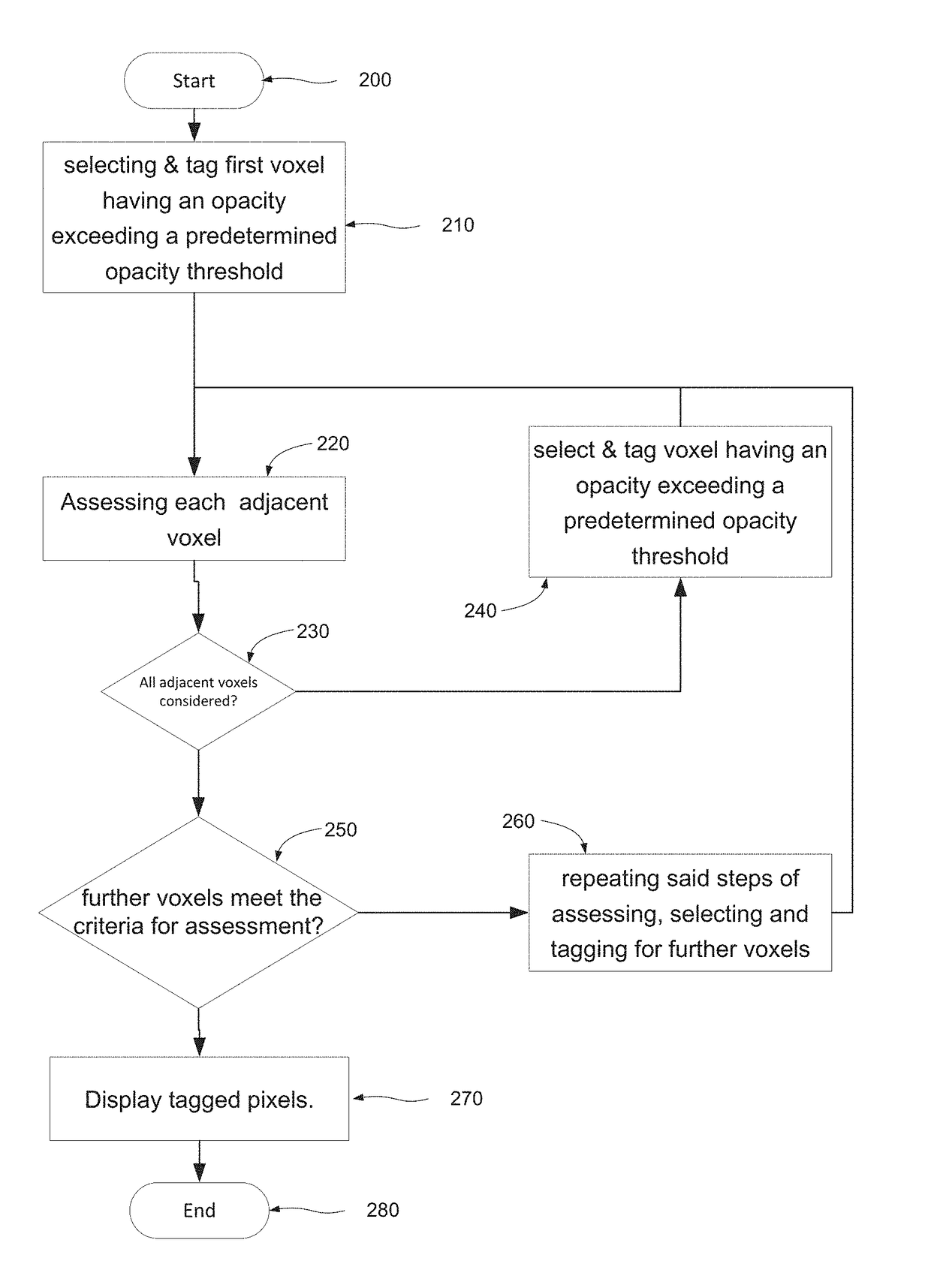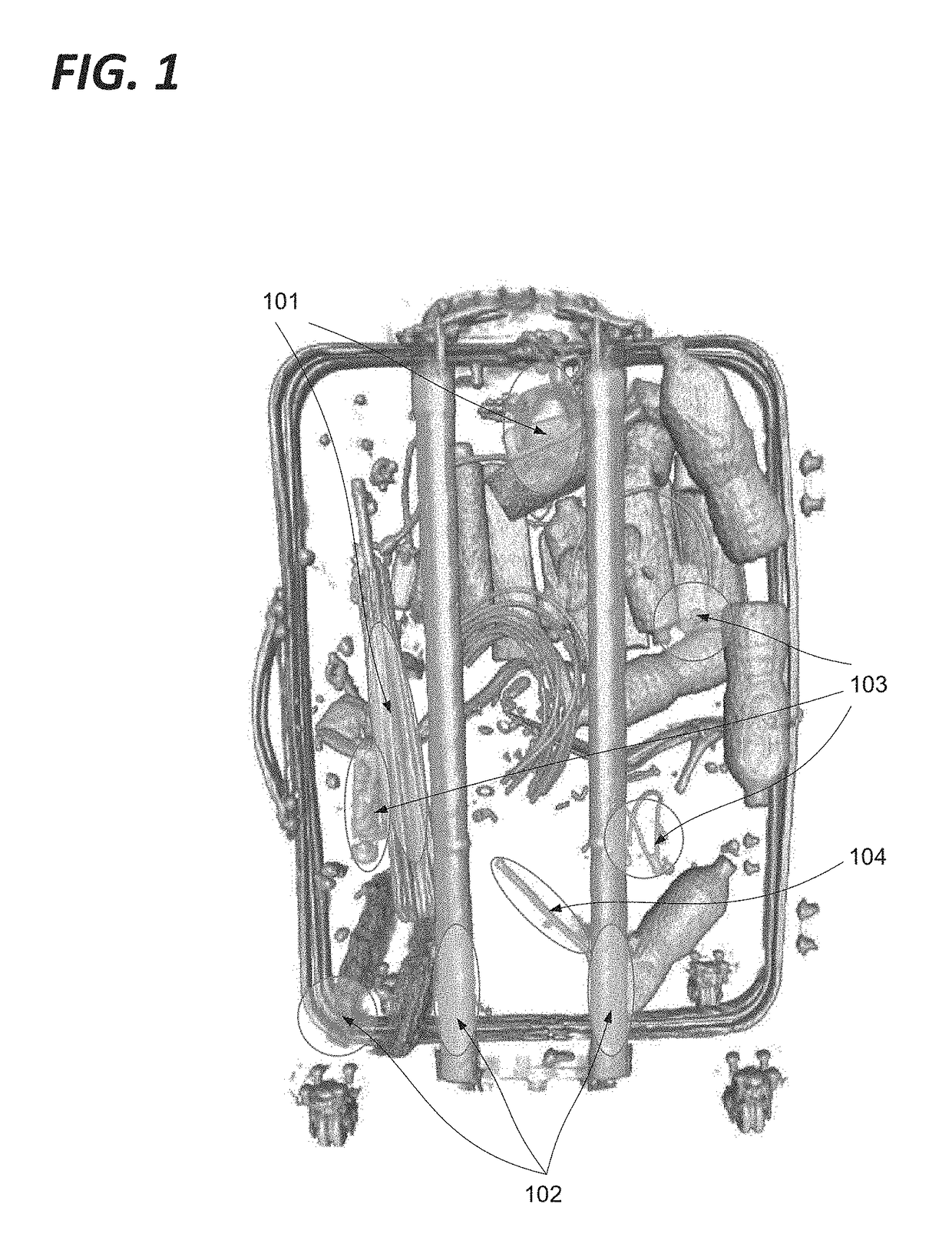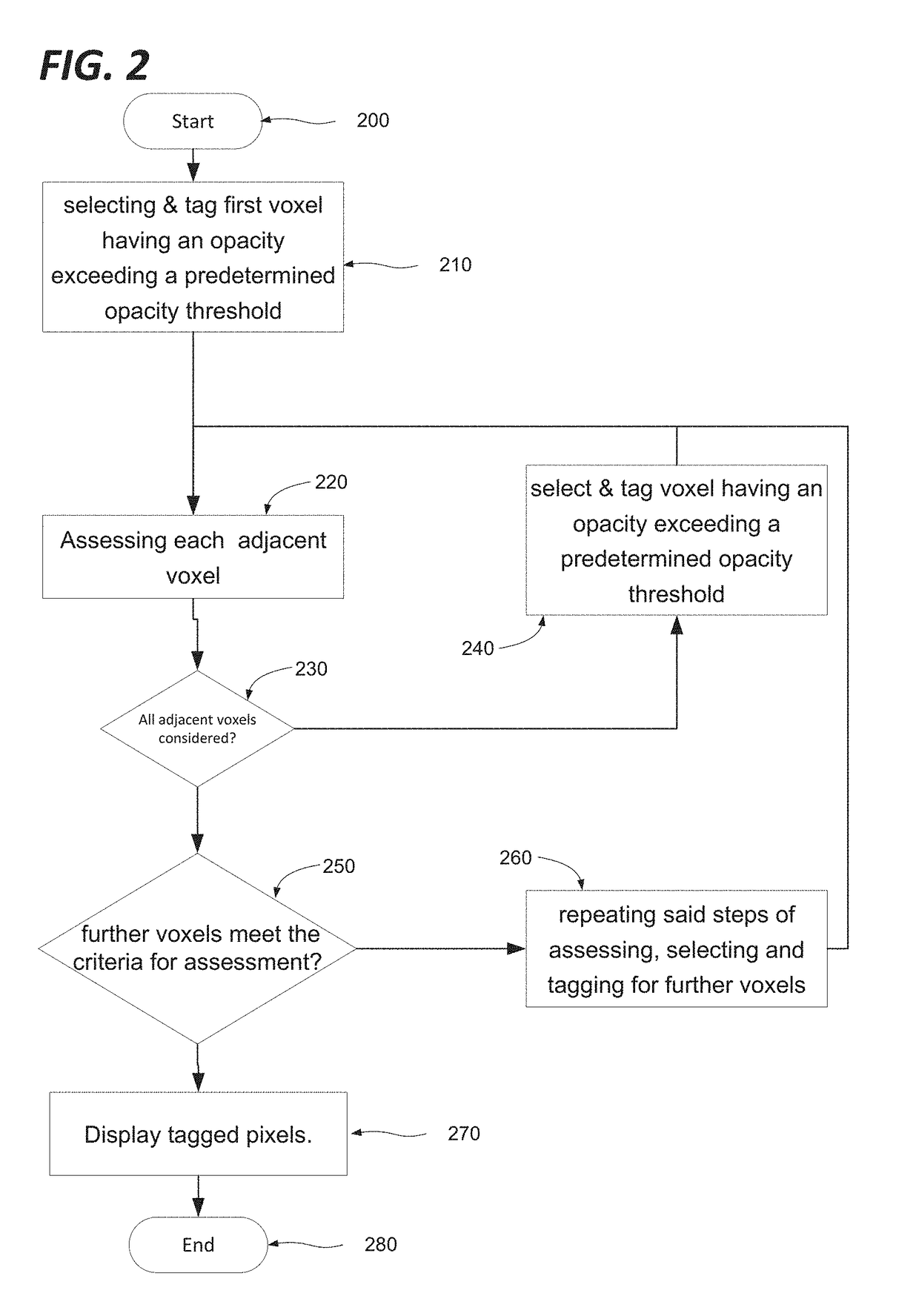Object definition in virtual 3D environment
- Summary
- Abstract
- Description
- Claims
- Application Information
AI Technical Summary
Benefits of technology
Problems solved by technology
Method used
Image
Examples
Embodiment Construction
[0040]FIG. 2 shows a method according to an embodiment.
[0041]As shown in FIG. 2 there is provided a method of selecting voxels for display in a computer generated image based on a three dimensional volume defined by a collection of voxels. The method starts at step 200 before proceeding at step 210 to select a first voxel having a scalar metadata value exceeding a predetermined scalar metadata value threshold. For the purposes of the present example, the scalar metadata value will be assumed to represent the opacity associated with the voxel, however the scalar metadata value may have any meaning, representing for example colour, density, etc. The method next proceeds to step 220, at which each voxel adjacent the first voxel is assessed. For any adjacent voxel whose opacity threshold exceeds the predetermined opacity threshold, the method proceeds to step 240 at which that voxel is selected and tagged. Once all adjacent voxels have been assessed for a given selected voxel, the metho...
PUM
 Login to View More
Login to View More Abstract
Description
Claims
Application Information
 Login to View More
Login to View More - R&D
- Intellectual Property
- Life Sciences
- Materials
- Tech Scout
- Unparalleled Data Quality
- Higher Quality Content
- 60% Fewer Hallucinations
Browse by: Latest US Patents, China's latest patents, Technical Efficacy Thesaurus, Application Domain, Technology Topic, Popular Technical Reports.
© 2025 PatSnap. All rights reserved.Legal|Privacy policy|Modern Slavery Act Transparency Statement|Sitemap|About US| Contact US: help@patsnap.com



